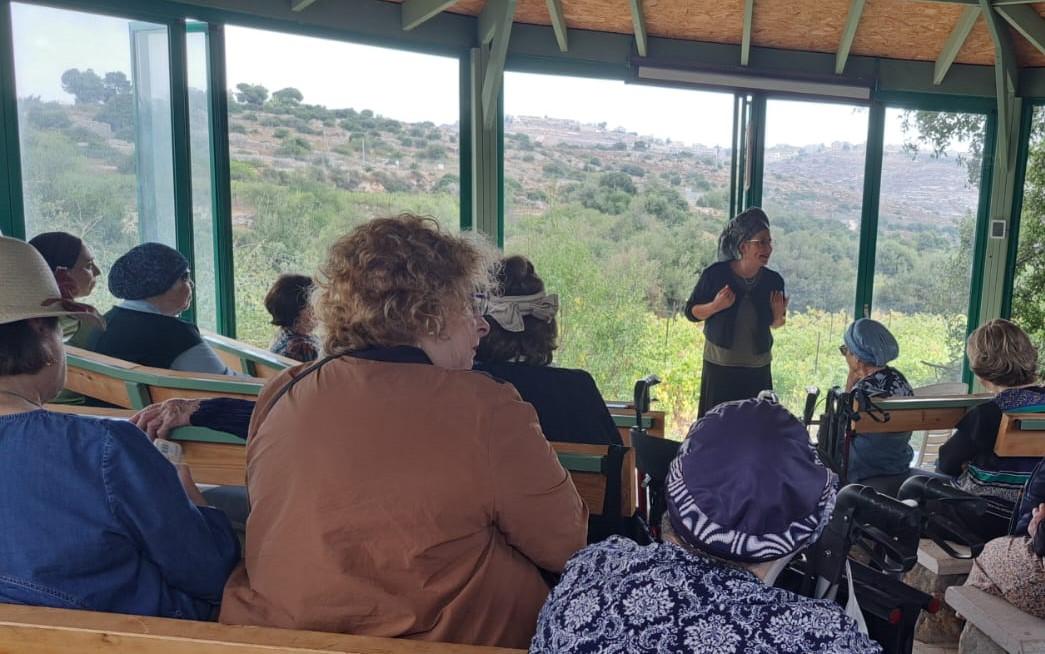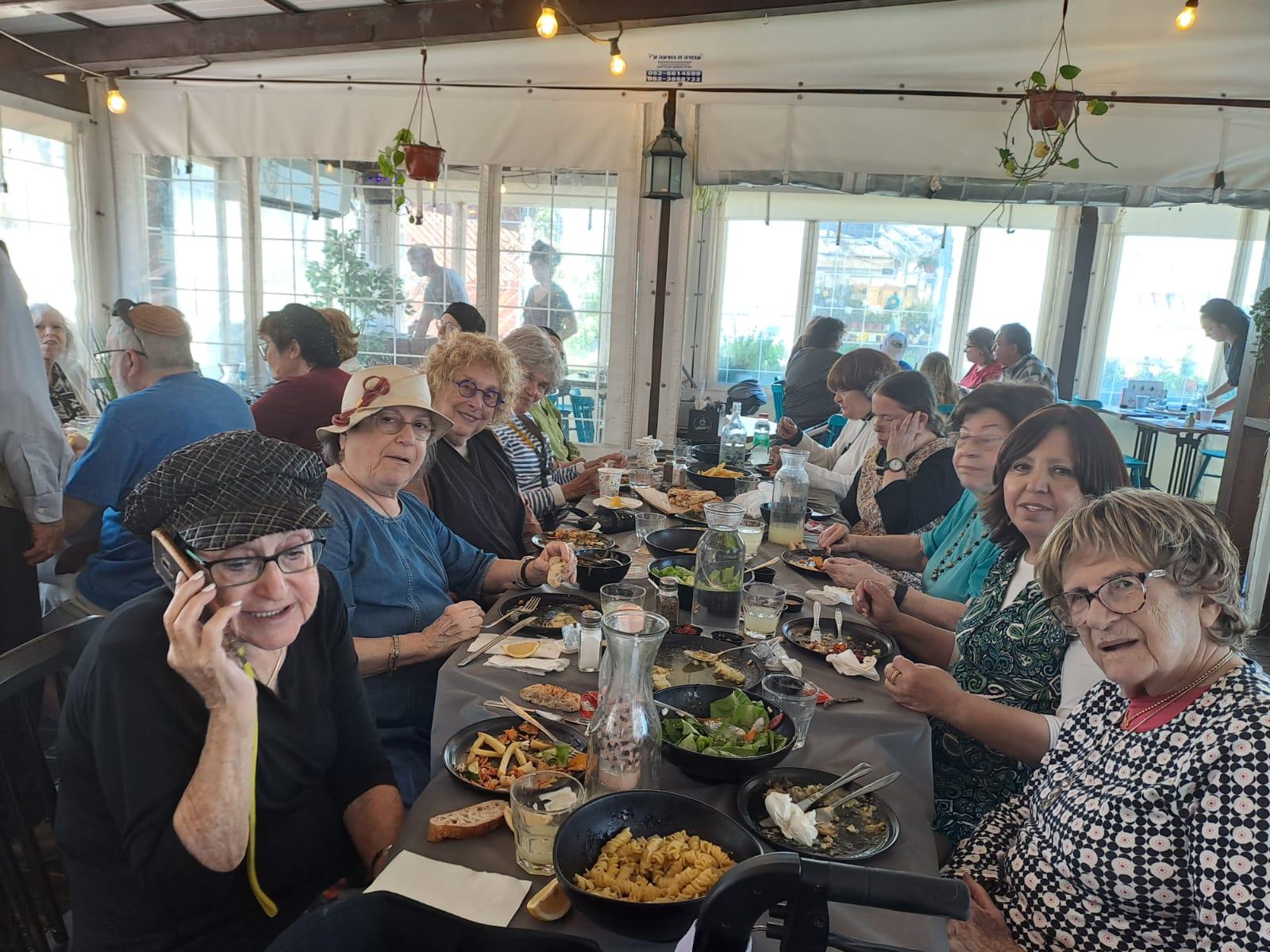By Loretta Harstein, Resident of Beit Tovei Ha’ir
On Tuesday 12th Elul, around thirty residents of Beit Tovei Ha’ir, plus some carers and staff, went on a tiyul to the Chevron area. It was arranged by our wonderful staff and included our one and only guide, Shlomo Wallach. Unexpectedly for many of us, it became a thought provoking and excellent preparation for the upcoming Yomim Noraim.
 We began in the Hallel Vineyard and heard Rina Ariel, the mother of Hallel Ariel hy”d, describe her devastation when her young daughter was murdered by terrorists in June 2016. She explained how the family dealt with the tragedy by not moving away from the dangers of the area, but by remaining at the vineyard and building the land around them. It was a lesson to us all and set the stage perfectly for the inspiring day ahead.
We began in the Hallel Vineyard and heard Rina Ariel, the mother of Hallel Ariel hy”d, describe her devastation when her young daughter was murdered by terrorists in June 2016. She explained how the family dealt with the tragedy by not moving away from the dangers of the area, but by remaining at the vineyard and building the land around them. It was a lesson to us all and set the stage perfectly for the inspiring day ahead.
We travelled next to Maarat HaMachpela. Whilst the vast majority of people on the tiyul had visited the Tomb of the Patriarchs in Chevron previously, I personally had never been. I was overwhelmed. Seeing in reality what we have learned about for years and years was so powerful. Travelling down the road walked by our forefathers, seeing their names and the names of our ‘mothers’ over their burial site, provoked a swell of emotion that I can only describe as thankfulness to Hashem that, at long last, I am truly living in the Holy Land.
I found myself looking around me at the eclectic mix of humanity. Some were saying Tehillim, some praying and crying, others sitting contentedly and looking around. It was both uplifting and moving.
Equally uplifting and moving for me was the story related by our very own Beit Tovei neighbor Chaya Generam. She spoke of the challenges faced by her family and others, over many years, in their attempt to settle in Chevron. A touching part of the story illustrated the amazing bravery of Chaya and three other women who were angry at being moved all over the country by the authorities, when they just wanted to settle in Chevron.
Together with their children, they climbed through the back of the empty Hadassah building, whilst soldiers were preventing access at the front. There were no facilities at all in this building, yet they remained there for a year. During that year no husbands were allowed to enter, except one man to make Kiddush on Shabbat . After davening nearby on Friday night, the husbands came to the windows of the building to sing Aishet Chayil. This story touched all of us deeply.
After a delicious lunch, the focus moved to the Gush region. On the way to the Gush Etzion Heritage Centre, Shlomo pointed out various places that illustrated the tough life and the sacrifices made by the inhabitants over the years.
One highlight of this part of the Tiyul was the film about the establishment of Gush Etzion. This showed us the settling of the very rough land and the formidable challenges faced by these very brave people. We also saw the terrible and tragic fall of the Gush. The film ended with an uplifting scene. It showed the only four members of the original Gush settlement who were not massacred, opening their arms to a flood of people running towards them. These people are their children, grandchildren and great-grandchildren, who returned to establish the Gush yishuvim for the fourth time.
Not one of us could say that they ‘enjoyed’ the day. Instead, we came away thinking deeply of the strength of character possessed by so many people, past, present and no doubt future, who live in Israel. The tiyul was both thought-provoking and soul-searching, thus preparing us emotionally, mentally and spiritually to face the Holy Days ahead.

